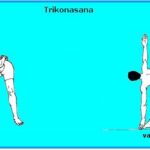Yawning May Help the Brain Chill Out
The motivation of yawning is hotly debated, but recent review suggests people yawn to cool the brain. Yawning may be a natural way of regulating brain temperature, another review suggests.
U.S. researchers study the frequency of yawns more than 80 people in the winter and another 80 people in the summer and found regular variations.
Yawning is known to be “infectious,” the researchers called out. After being showed pictures of other individuals yawning, about half of the participants yawned while outdoors in winter, contrasted with less than one-quarter while outdoors in summer, according to the report published online September 22 in the journal Frontiers in Evolutionary Neuroscience.
The finding that individuals yawn less often in the summer, when outdoor temperatures often surpass body temperature, recommend that yawning could be a natural brain-cooling mechanism, said the researchers at Princeton University and the University of Arizona.
“This gives extra support for the view that the mechanisms controlling the expression of yawning are included in thermoregulatory physiology. Despite various theories posited in the past few decades, very little experimental research has been done to reveal the biological function of yawning, and there is still no consensus about its motivation among the dozen or so researchers studying the subject today,” study leader Andrew Gallup, a postdoctoral research associate in Princeton’s department of ecology and evolutionary biology, said in a university news release.
“Enter the brain cooling, or hypothesis, thermoregulatory which suggests that yawning is triggered by growing in brain temperature and that the physiological consequences of a yawn act to promote brain cooling,” he included.
Yawning may help cool the brain through the deep inhalation of cool air and by upgraded blood flow to the brain caused by the stretching of the jaw.
“According to the brain cooling hypothesis, it is the temperature of the ambient air that gives a yawn its utility. Thus yawning should be counterproductive — and therefore suppressed — in ambient temperatures at or exceeding body temperature because taking a deep inhalation of air would not promote cooling. For example, there should be a ‘thermal window’ or a relatively narrow range of ambient temperatures in which to expect highest rates of yawning,” Gallup clarified.



Facebook Comments